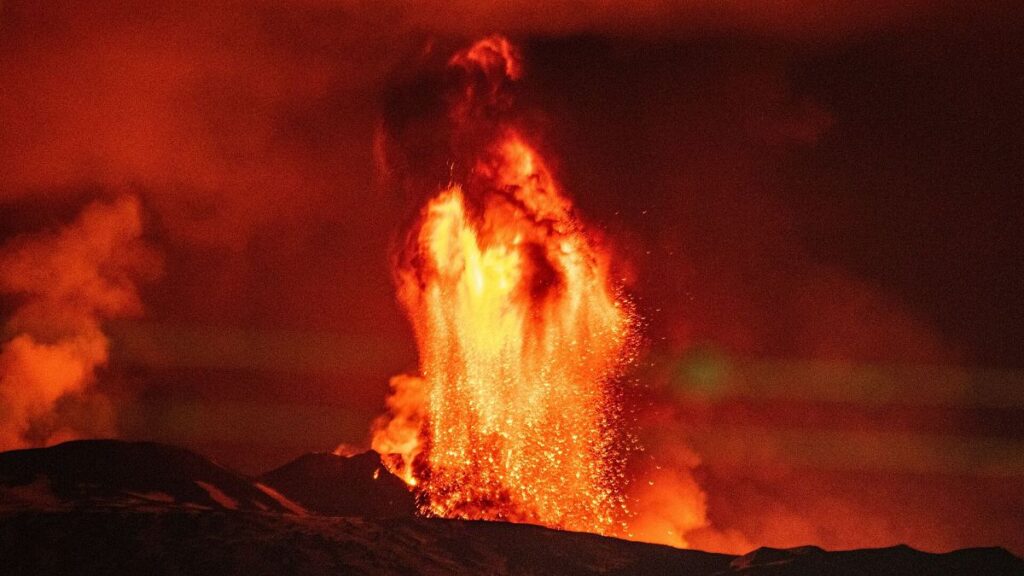Published on
Despite warnings to stay away, hikers on Mount Etna were forced to flee this week after Italy’s most active volcano erupted.
Footage from the mountain shared on social media showed tourists scurrying down the slopes as ash rose into the sky. Authorities had issued alerts on Monday morning after signs of increased volcanic activity, but dozens ignored them and climbed toward the summit anyway.
“There was a big explosion and a crater collapsed but luckily it fell into a deserted area,” said Salvo Cocina, head of Sicily’s Civil Protection Department. “It’s very hard to block access [to Mount Etna] – you can’t fence it off.”
No one was injured and the alert level was lowered to the standard ‘yellow’ on Tuesday.
Why is Mount Etna so popular with hikers?
Experiencing a close-up volcanic eruption is a bucket-list event, and Mount Etna offers one of the most accessible opportunities to do it.
At 3,350 metres tall and 35 kilometres wide, the Sicilian giant frequently rumbles to life, offering a front-row seat to nature’s raw power.
Even when it’s active, many trails and paths remain safe to climb.
“[The experience is] a mix of awe and adrenaline,” says mountain guide Saro Trovato, who safely – and legally – climbed Mount Etna when it erupted inFebruary.
“Even from a distance, you can feel the heat radiating from fresh lava flows.”
But above 2,500 metres, hikers are legally required to travel with a qualified mountain guide, who can keep visitors safe as well as informed.
On Tuesday, many hikers were as high as 2,700 metres above sea level.
How to stay safe when visiting Mount Etna
Conditions can change quickly on the mountain.
On Monday, a pyroclastic flow – a fast-moving surge of gas, rock and ash – travelled two kilometres down the mountainside. It didn’t go further than the Valle del Leone, a natural containment area for lava flows, but any changes could have led to catastrophe.
Tourism presents other problems during eruptions, too. In February, Cocina said that tourists parked on narrow roads around Mount Etna had blocked access for emergency vehicles. Firefighters had to be deployed to manage the growing crowds.
This is why the authorities mandate mountain guides such as Trovato, who receive real-time updates from volcanologists and rescue teams and are trained to respond if conditions suddenly change.
“Always check volcanic activity updates from local authorities and respect any access restrictions,” he advises. Especially when the volcano starts to stir.
Read the full article here

